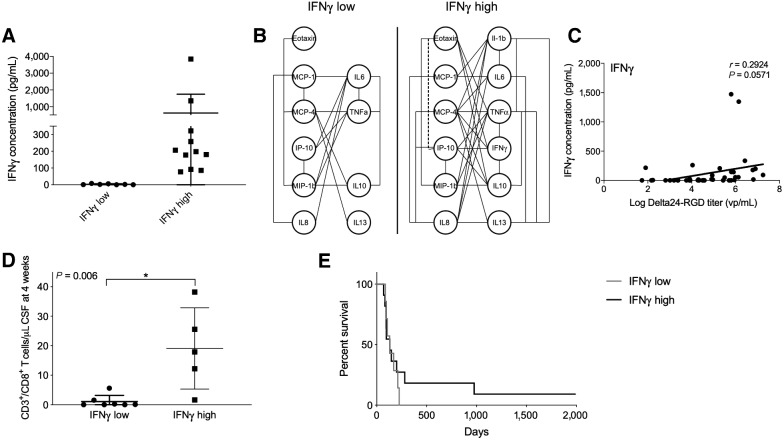Figure 9.
The degree of inflammatory response is correlated with survival. In a subset of patients, termed IFNγ-high, CSF IFNγ levels rose above 50 pg/mL at 2 to 4 weeks after treatment (A). In these patients, almost all measured cytokines and chemokines are significantly correlated and increased. Significant correlated cytokines/chemokines are connected with a straight line (P < 0.05) or with a dotted line (P < 0.001; B). The levels of IFNγ are not significantly correlated with levels of Delta24-RGD (C). The IFNγ-high group also revealed higher CD8+ T cells numbers in CSF compared with IFNγ-low group (D). Kaplan–Meier survival curve of treated patients separated into IFNγ-high and IFNγ-low groups. Both long-term surviving patients (nos. 15 and 16) belong to the IFNγ-high group (E, black line).

